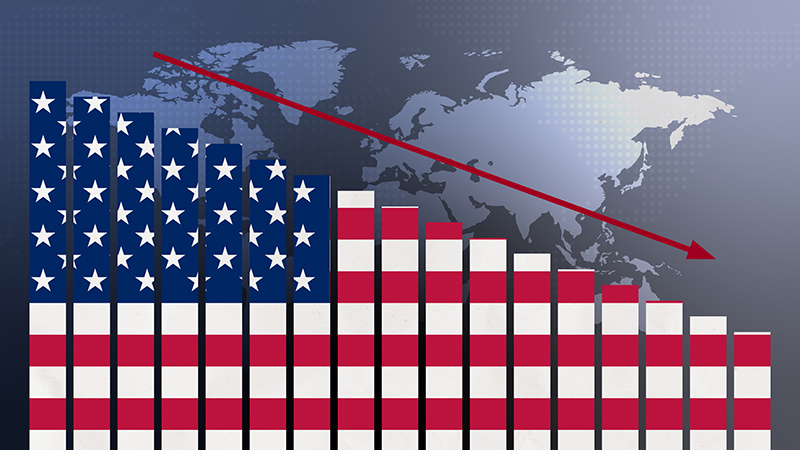When it comes to diversifying away from equities and bonds, investors have often turned their gaze to the IA Commodities and Natural Resources sector.
However despite it’s appeal of being a genuine alternative asset class, and the price of gold recently hitting an all-time high, it remains a sector retail investors seem to wary of.
According to the IA, after flat inflows in 2023, in the first three months of the year the sector has witnessed net outflows of £120.5m, despite positive returns over one and three years. Indeed in 2022, when bonds and equities fell in tandem, funds in the IA Commodities and Natural Resources sector produced an average return of 18.8% according to FE Fundinfo.
So is it time to place more faith in both the sector and, within in this, is gold still the safe haven asset it is purported to be?
“We remain bullish on natural resources, driven by factors such as the ongoing energy transition, growing supply-demand imbalances, and the evolving dynamics of inflation,” said Ernst Knacke, head of research at Shard Capital. “The challenge, however, lies in accurately assessing the ‘fair value’ of these assets.”
Among the array of commodities to choose from, Knacke said he likes gold, not just because of its shiny appearance, but more so owing to the current supportive supply-demand dynamics and the “rather attractive” trend characteristics.
“It also provides us and our clients with capital preservation against severe, but inevitable, monetary devaluation, as well as a hedge against event risks,” he said.
See also: Head to head: Lost property
Outside of gold, Knacke noted that natural gas holds promise in the long run, however he added the price trends in natural gas markets have seemingly entered an “abyss” and highlights the risks in commodity markets.
“A ‘commodity’ we like, albeit by no means a true ‘natural resource’, is regulated carbon markets,” he said. “It should benefit from rising commodity prices and offer an avenue for a more sustainable investment solution. Regulated carbon markets are supported by secular supply-demand characteristics and improving liquidity.”
Having reached an all-time high of $2,350/oz in April, another asset allocator drawn to the appeal of gold is Iboss. Kate Townsend, investment analyst at the group, believes it remains a long-term diversifier against more traditional risk assets.
“The in-unison fall of bonds and equities in 2022 exemplified the need for diversifying assets in order to reduce volatility and ultimately protect capital,” she said. “In the more inflationary environment we currently exist in, other alternative assets such as property have been facing significant headwinds as yields and interest rates rise.
“While gold has historically struggled in these conditions it has, so far, fared well in the face of broader market uncertainty. Highlighting the need for diversification even among alternative assets.”
Iboss gains its exposure to gold through the Ninety One Global Gold fund, managed by George Cheveley.
“We have held the position since August 2019 and it is predominantly exposed to gold miners,” said Townsend. “Typically, miners outperform in a rising gold market and have done so in the most recent rally. As inflationary pressures show signs of abating this could be even more positive for miners as they begin to show an increase in production, growth and profit margin. It is worth noting that due to its relative volatility even a small position in gold miners can act as effective diversifier.”
One asset allocator less convinced by the case for gold is Bevan Blair, chief investment officer at One Four Nine Portfolio Management.
“We do not hold gold in our portfolios and it is unlikely we ever would,” said Blair. “Our asset allocation process attempts to forecast financial markets using cash flow analysis discounting at an appropriate rate, to produce an expected return over 10 years. Because gold has no cash flow we have considered alternative forecasting methodologies – but in the long run the forecasting abilities of these models are weak and it becomes a guessing game.”
“We therefore have a naïve expected return of 0% for gold, with a large volatility. While there is some diversification benefit from holding gold, in our view this normally isn’t enough to outweigh the fact that gold has a low expected return. Inclusion of gold in the portfolios would therefore be a punt on our behalf and that is not what we are trying to achieve for our clients.”
See also: Sector in review: IA UK All Companies
Blair added that he also does not subscribe to the theory that gold can be used as a hedge against inflation.
“It may be true over the long term, but your time horizon on this is typically in centuries, not decades,” he said. “Gold can perform poorly in high-inflation environments, the 1980s being the perfect example. By all means, have some gold, but keep it in a safe and give it to your great-grandchildren.”
While Blair might not be convinced about gold being an inflation hedge, Chris Faulkner-MacDonagh, a global multi-asset portfolio manager at T Rowe Price, is more convinced on the case for commodity equities in general.
“Commodity equities play a role in a multi-asset portfolio, both as a source of returns and as protection against inflation, said Faulkner-MacDonagh. “Importantly, we prefer equities over commodity futures, as companies offer operational leverage and ease of access, providing better long-term returns.
“Like commodity futures, the equities of commodity producers have a very high response to unexpected inflation, outperforming the broad market by many multiples when inflation surges. As a result, investors need only take a small allocation from their overall equity exposure to achieve protection.
“With attractive valuations and sustained global uncertainty, investors need to take inflation as a serious risk and look for the best tools to protect portfolios.”
Michelle Butler, senior portfolio specialist for real assets and infrastructure at Cohen & Steers said she is bullish on the case for commodity and natural resources over the next 10 years.
“We believe the world is transitioning from an era of commodity abundance to one of undersupply, which may result in strong commodities and natural resource equities returns over the next decade,” said Butler. “Factors such as rising borrowing costs, decreased globalisation and elevated geopolitical risks may hamper commodity supply growth, contributing to a substantial improvement in returns compared to the prior decade.
“We expect returns in natural resource equities to exceed those of the broader global equity market over the next 10 years as the macroeconomic regime shift drives opportunities in real assets overall.”
This article was originally written for our sister publication, PA Adviser











